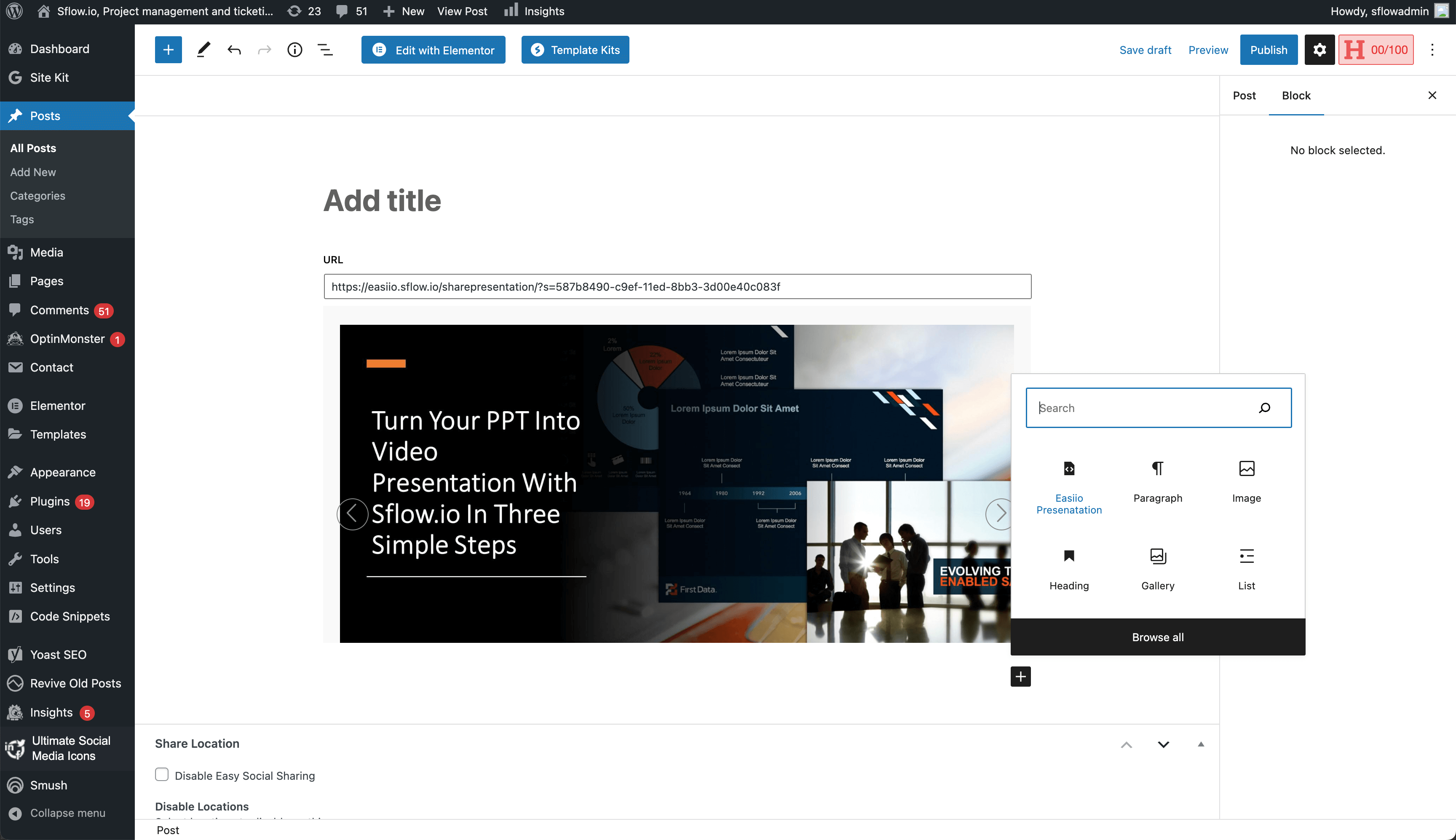

 Sflow
Sflow






WordPress Plugin
The sFlow Video Presentation WordPress Plugin lets you embed video presentations effortlessly on your WordPress website or blog, without worrying about compatibility issues.You can do a search on WordPress Plugin. It's easy to use and integrates smoothly with WordPress, making it perfect for business owners, educators, or anyone who wants to add engaging video content to their website.
 Sflow
Sflow








WordPress Plugin
The sFlow Video Presentation WordPress Plugin lets you embed video presentations effortlessly on your WordPress website or blog, without worrying about compatibility issues.You can do a search on WordPress Plugin. It's easy to use and integrates smoothly with WordPress, making it perfect for business owners, educators, or anyone who wants to add engaging video content to their website.


Waterfall project management and Agile project management are two distinct approaches to managing projects. Waterfall project management is a linear, sequential approach where each phase of the project is completed before moving on to the next phase. This method is often used in industries with strict regulations or requirements, as it provides a clear structure and timeline for the project. On the other hand, Agile project management is a more flexible and iterative approach that focuses on delivering value to the customer through continuous collaboration and adaptation. Agile allows for changes to be made throughout the project, based on feedback and evolving requirements. In summary, Waterfall project management follows a rigid, step-by-step process, while Agile project management emphasizes adaptability and collaboration.
The main technology in Waterfall project management is the traditional approach of sequential and linear project development, where each phase must be completed before moving on to the next. This method relies heavily on detailed planning and documentation upfront to ensure a smooth progression from one stage to the next. On the other hand, Agile project management emphasizes flexibility and adaptability by breaking down the project into smaller, iterative cycles known as sprints. Agile teams use various collaborative tools and software such as Jira, Trello, and Slack to facilitate communication, track progress, and manage tasks in real-time. In comparison, Waterfall projects typically rely on Gantt charts and project management software like Microsoft Project for planning and monitoring progress. Ultimately, the choice between Waterfall and Agile project management depends on the specific needs and requirements of the project, with Agile being more suited for dynamic and rapidly changing environments while Waterfall is better for projects with well-defined requirements and deliverables.


When it comes to choosing between Waterfall Project Management and Agile Project Management, it is important to consider the specific needs and requirements of your project. To find the best approach, start by evaluating the scope and complexity of the project, as well as the level of flexibility and adaptability required. Waterfall Project Management is ideal for projects with clearly defined requirements and a linear progression of tasks, while Agile Project Management is better suited for projects that require frequent collaboration, feedback, and the ability to adapt to changing priorities. Ultimately, the key is to assess the unique characteristics of your project and choose the methodology that aligns best with your goals and objectives.

Leverage the power of agile methodologies and AI tools to enhance team collaboration and project success.



01. Kanban view

02. List view

03. Calendar view

04. Github integration

05. Sprint

06. Release

07. Burn down chart

08. Gantt chart

Agile methodologies are widely used in software development for iterative progress and continuous improvement.

Agile project management helps in planning and executing marketing campaigns with flexibility and adaptability.

Agile facilitates rapid prototyping and iterative feedback in product development.

Agile methodologies ensure efficient and adaptable event planning and execution.Agile methodologies ensure efficient and adaptable event planning and execution.

Agile tools improve team communication and collaboration, leading to better project outcomes.

Agile methods allow for quick adjustments based on feedback and changing requirements.

Agile tools streamline workflows and reduce bottlenecks, enhancing overall team productivity.

Continuous testing and feedback in Agile ensure higher quality deliverables.

Agile reduces waste and focuses on delivering value, leading to cost savings.

Agile methodologies encourage regular project reviews and updates, increasing team transparency regarding project progress and goals.

InnovateTech Solutions Chief Product Officer

BrightWave MarketingCampaign Strategy Director

Precision Manufacturing Group Project Management Director
By using Your Website Name,
you agree to our Cookie Policy.